A little known Pre-Eyckian masterpiece in Gdańsk
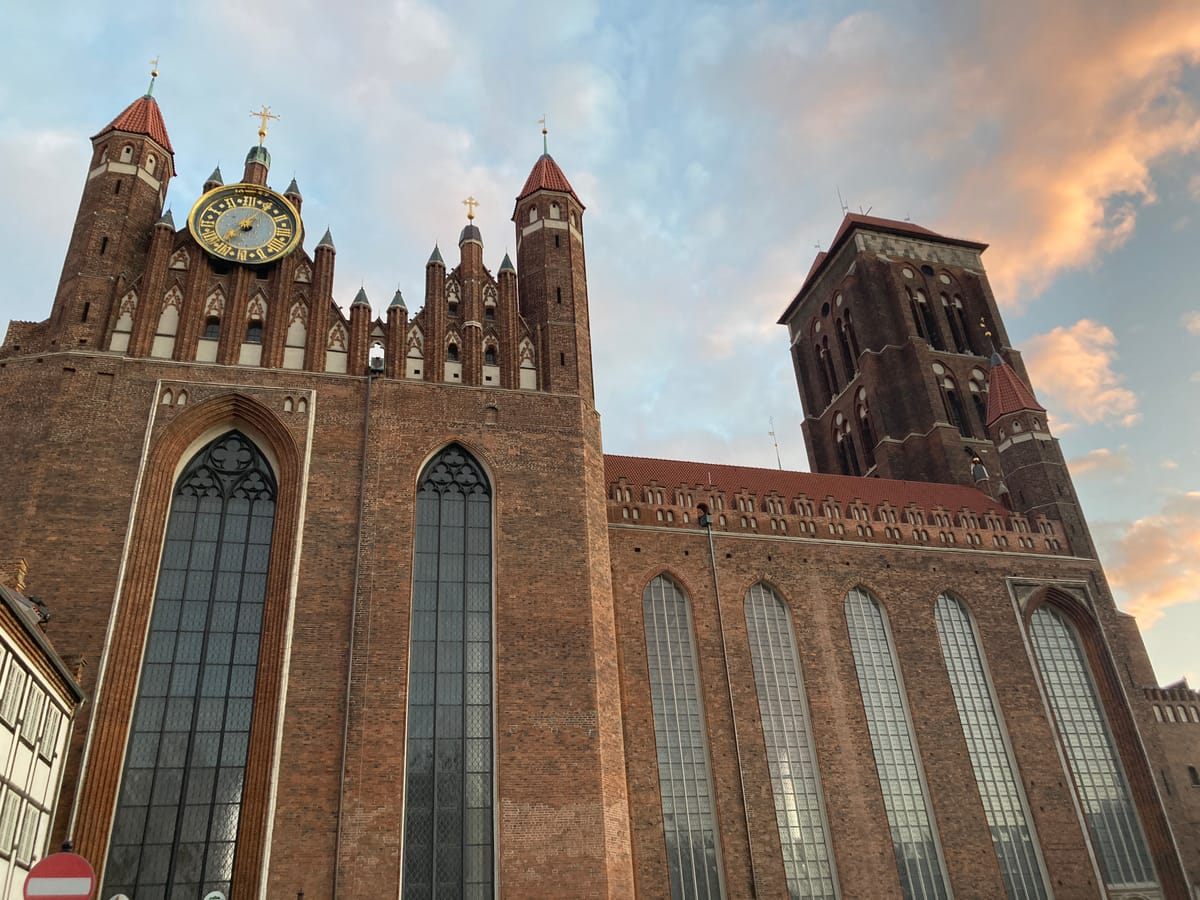
In the fall of last year I traveled to the port city of Gdańsk in Poland to view the Last Judgement by Hans Memling. Gdańsk is a beautiful medieval port city, highly reminiscent of Bruges with its tall red brick row-houses and churches. It even features a very large medieval wooden crane, a machine that was likewise a common sight in medieval Bruges.
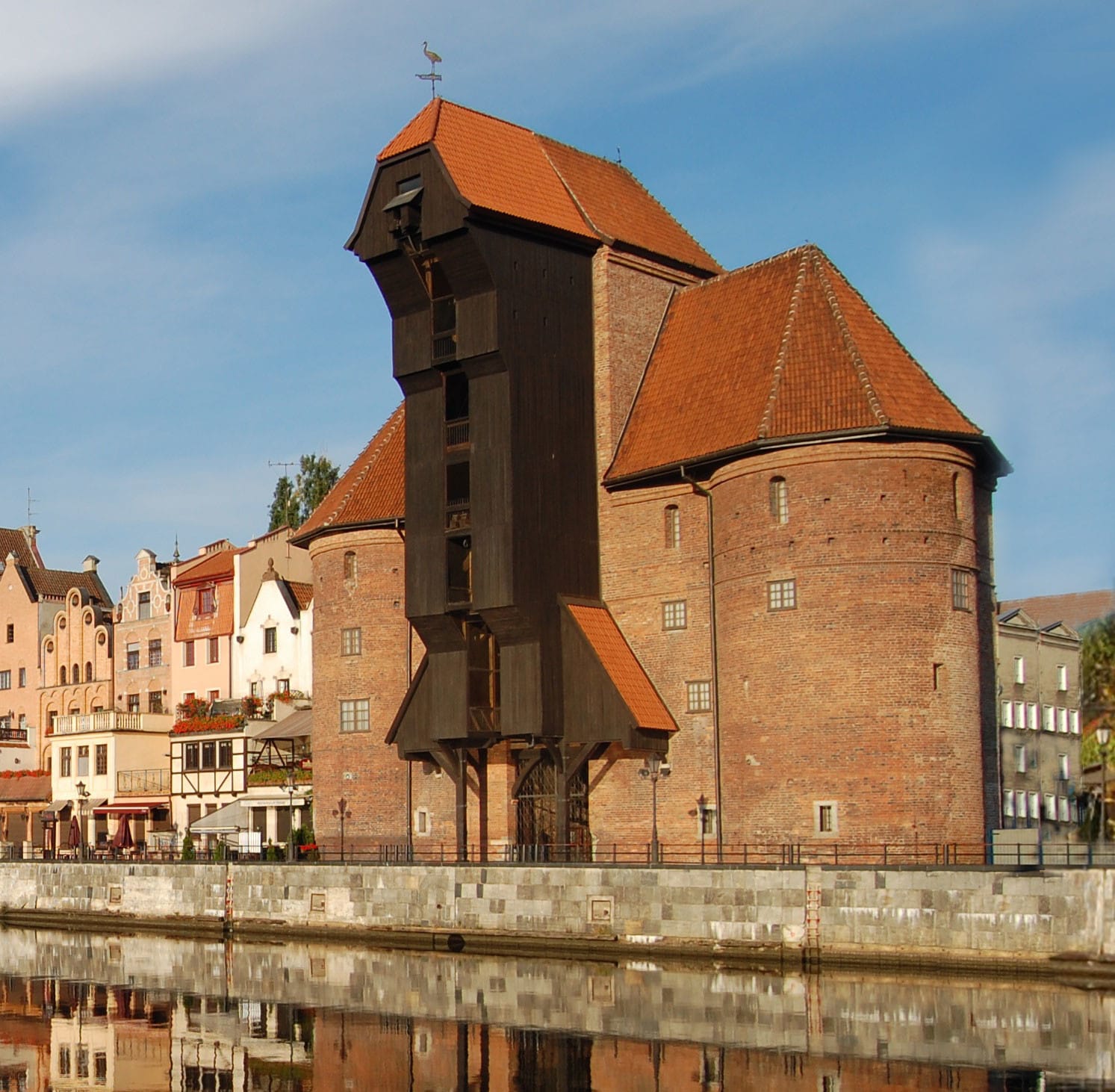
The Last Judgement is one of his most famous masterpieces and was certainly worth the journey to see. But if you are a connoisseur of Early Netherlandish painting then you probably already knew that, and that's not why I am writing this blog...
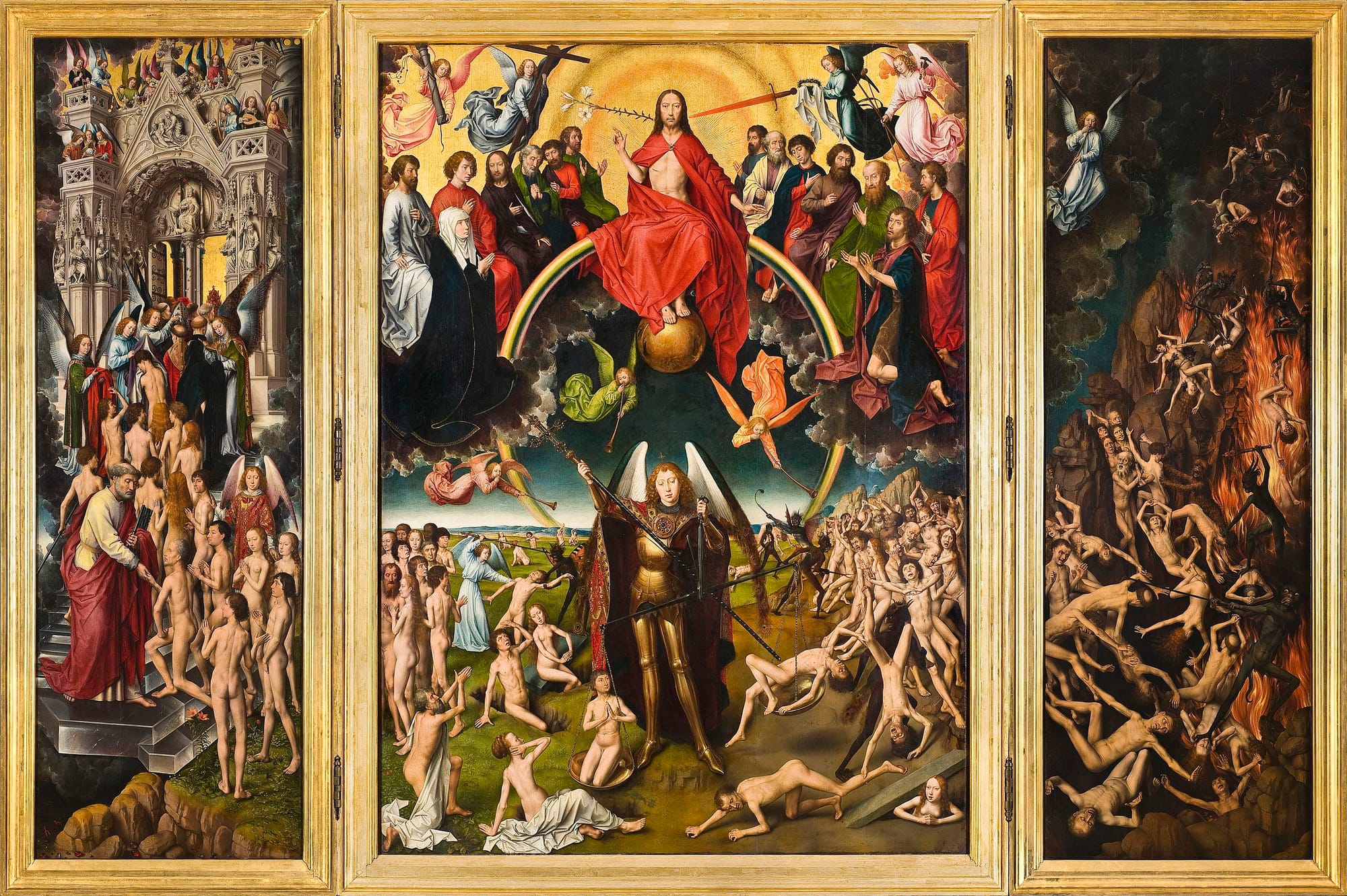
After viewing the Last Judgement, I walked around town and entered the St. Mary's Church. The church in Gdańsk contained one of the most curious and eclectic arrangements of art and sculpture I have every seen. There were several early paintings from the 1st half of the 15th century, a rare find considering how few have survived. The artistic influences in the art of Gdańsk are primarily German, with influence both from the Low Countries to the west and central Europe to the south.
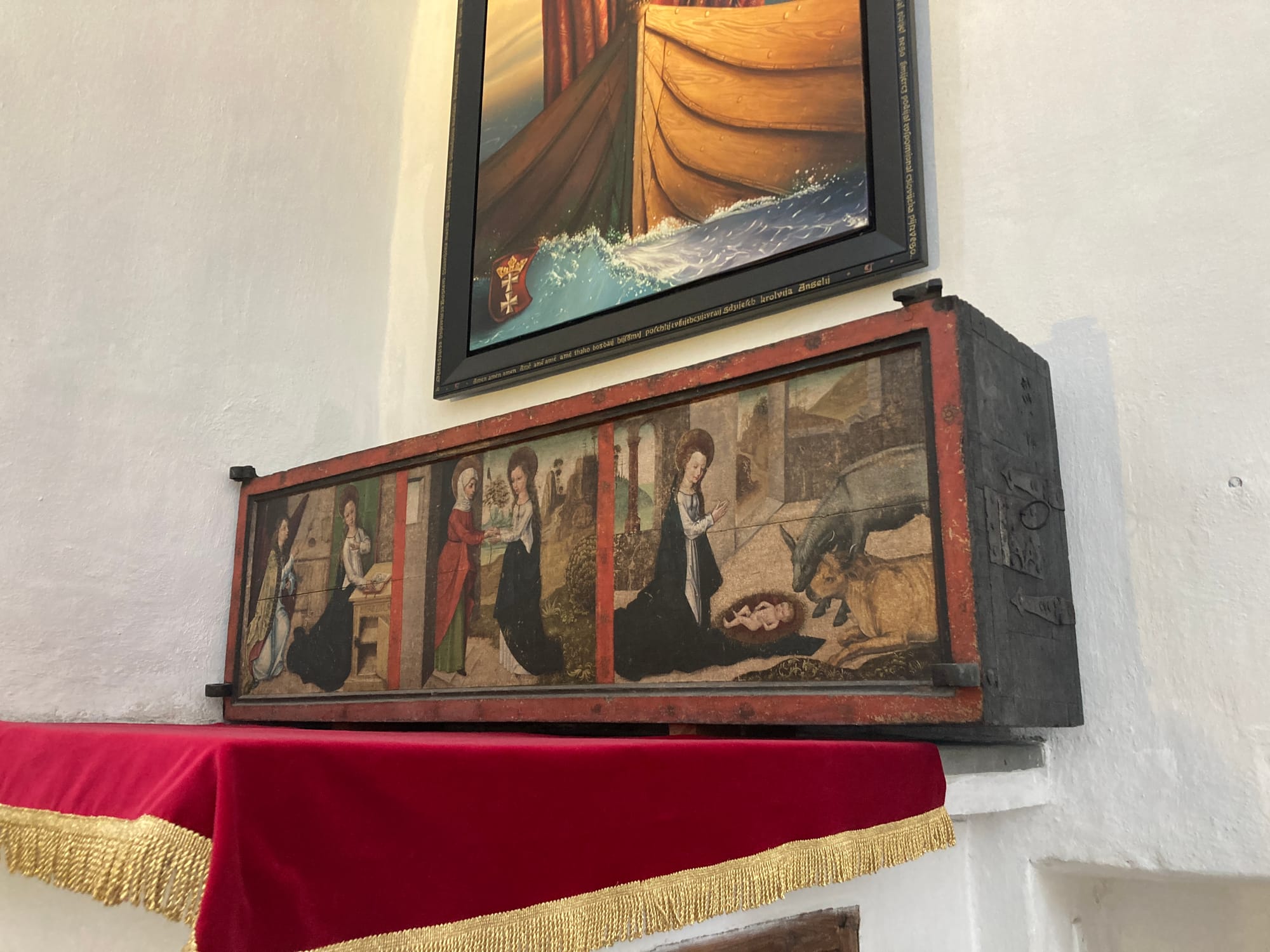
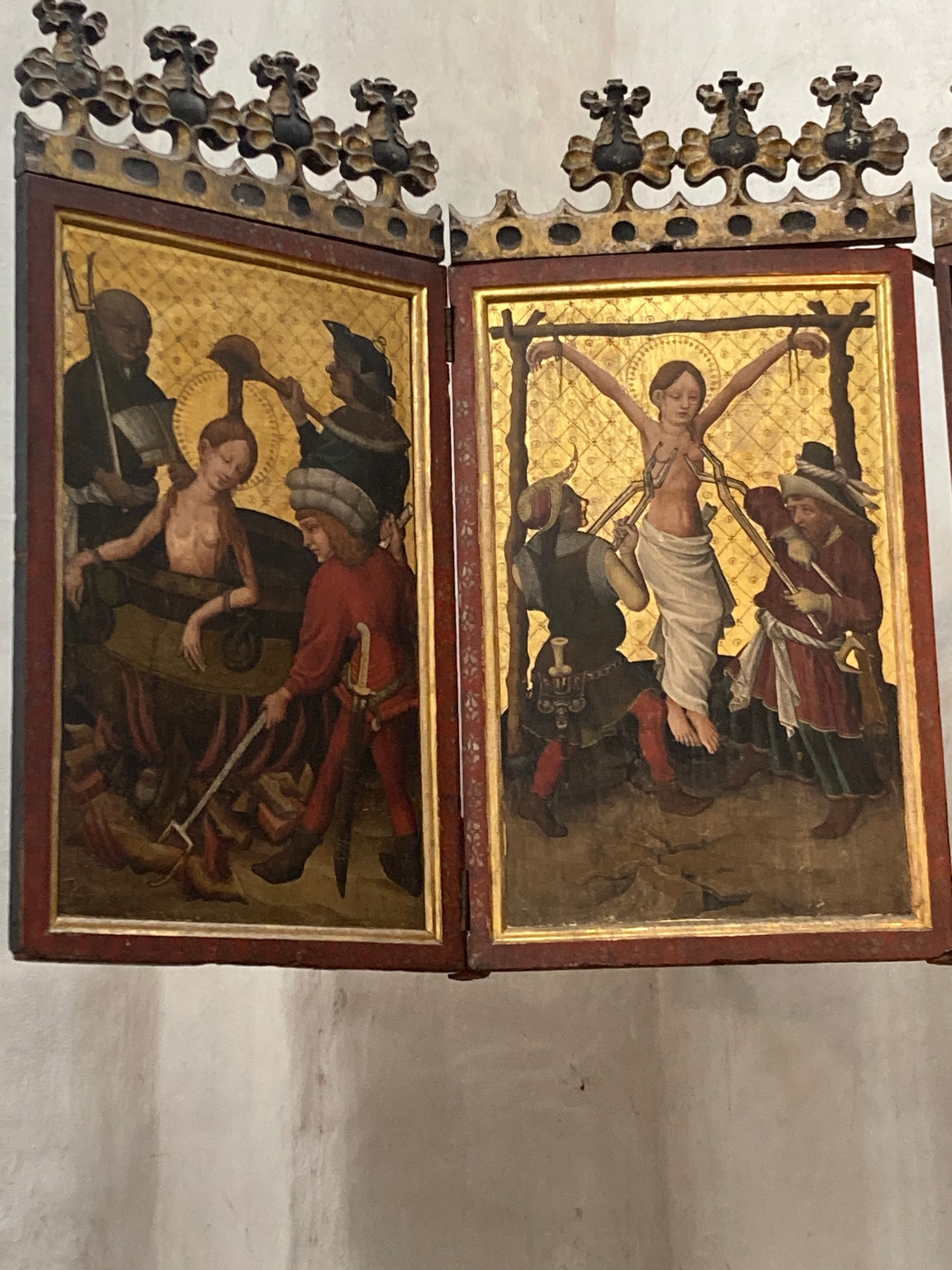

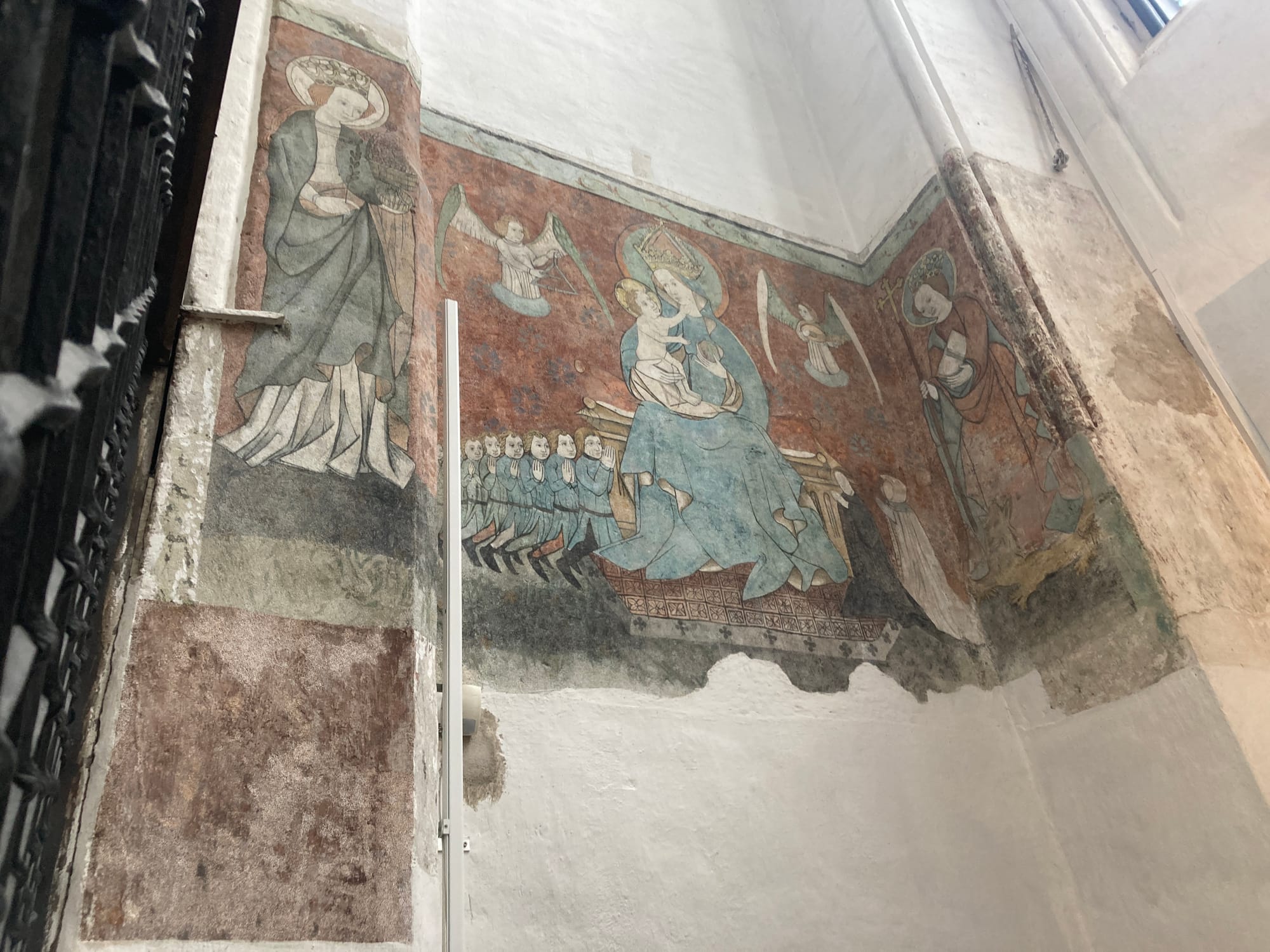
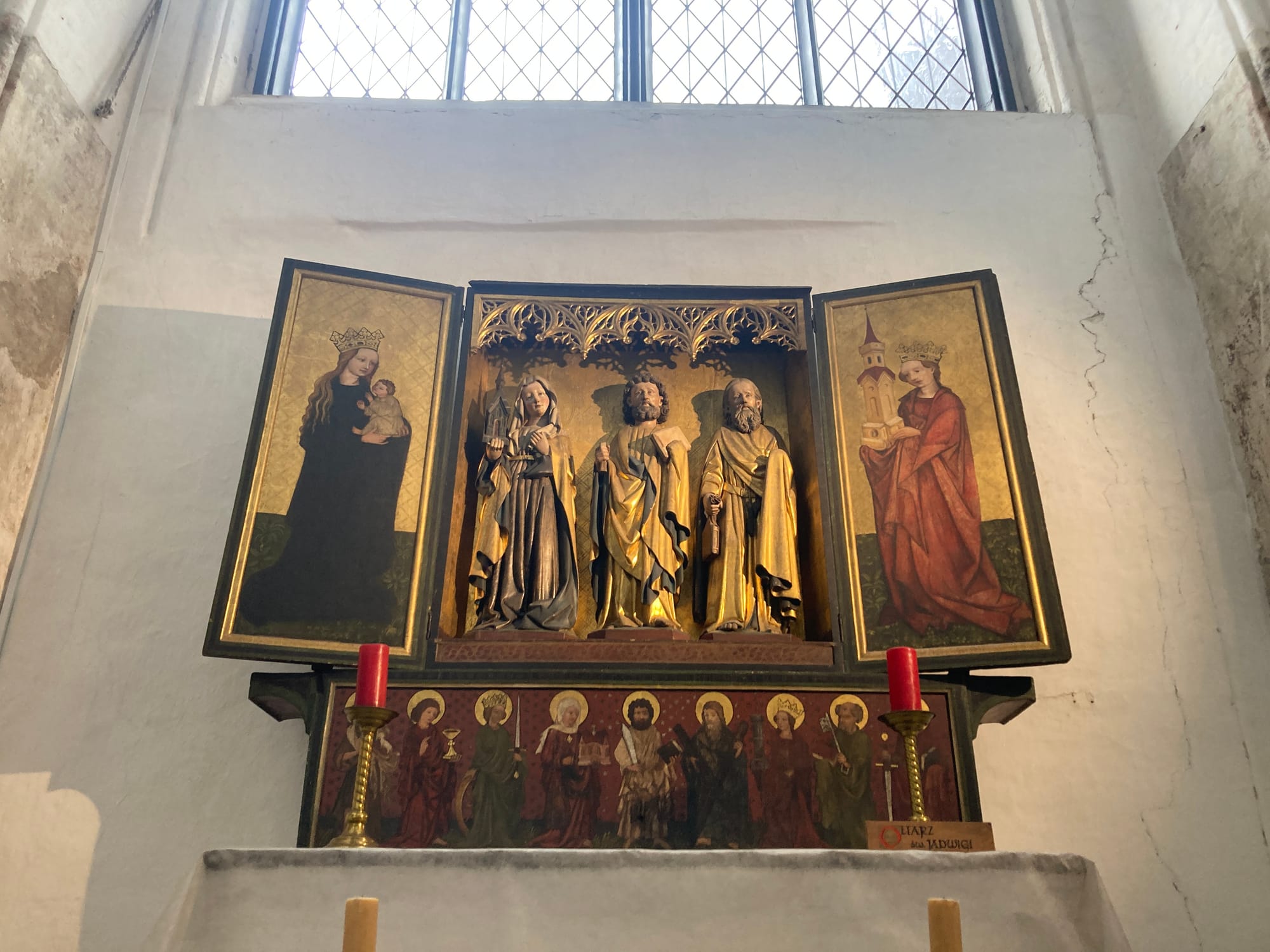
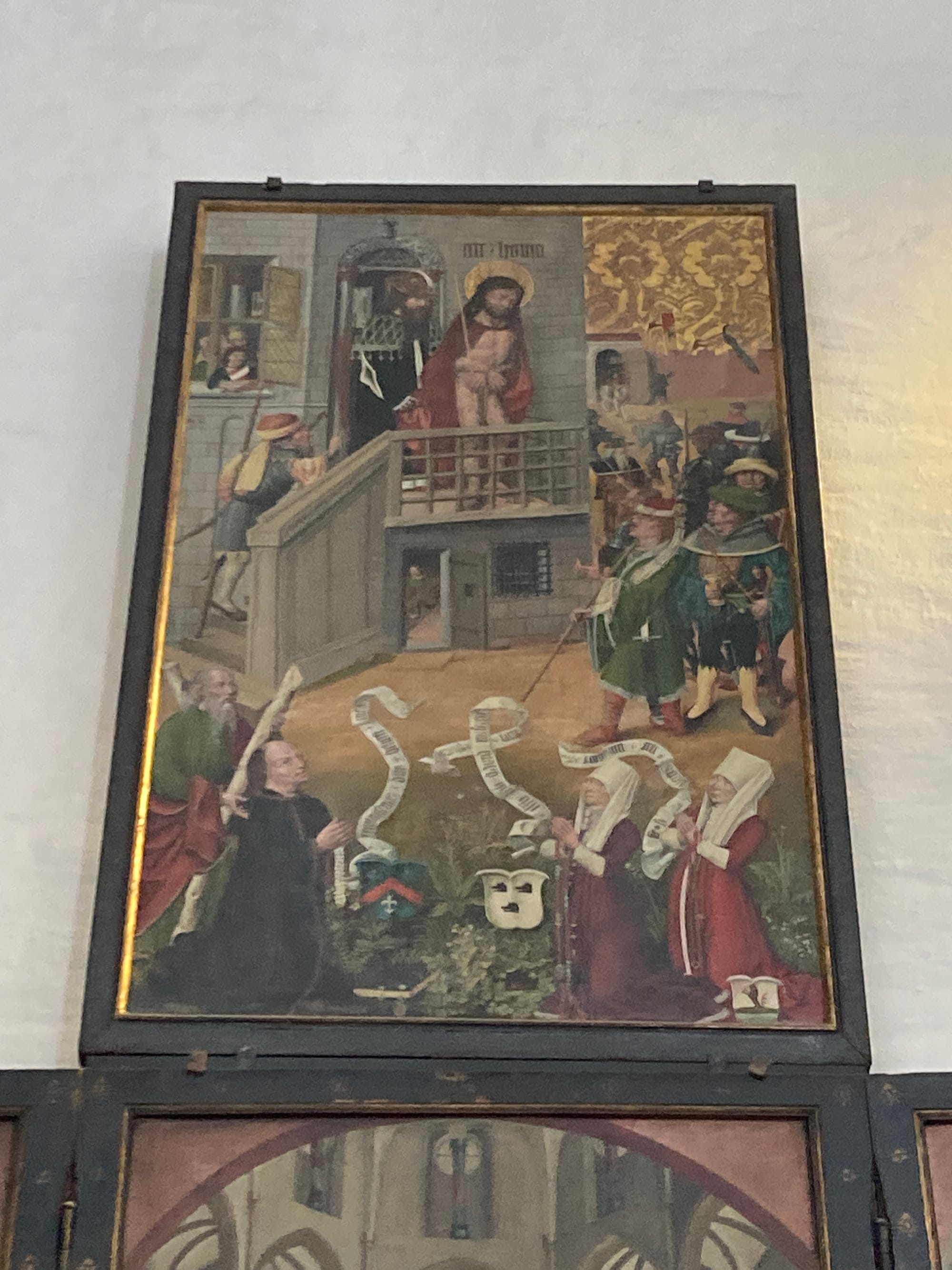

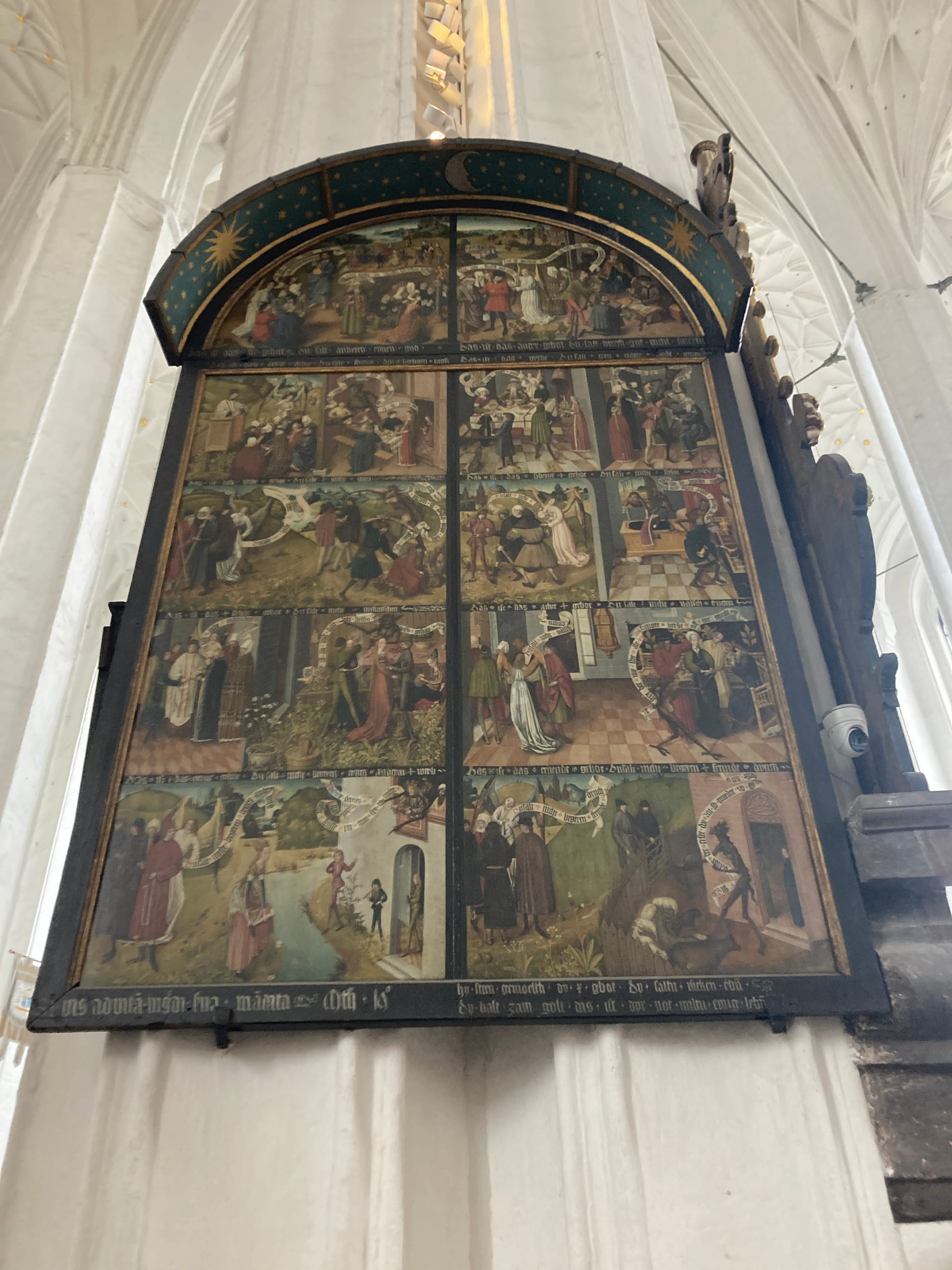
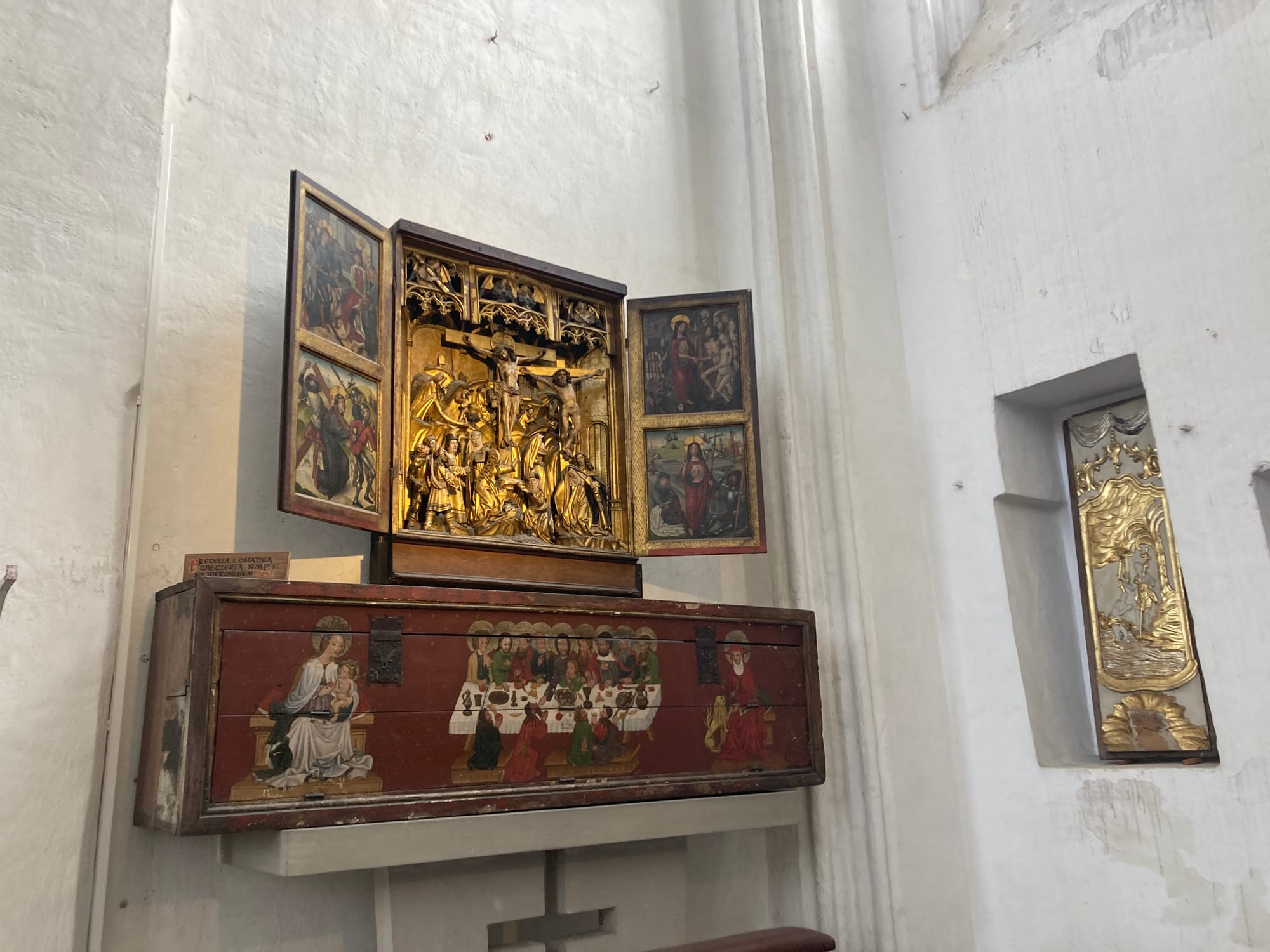
Various works of art on display at St. Mary's Church
There is even a reconstructed giant medieval astronomical clock.
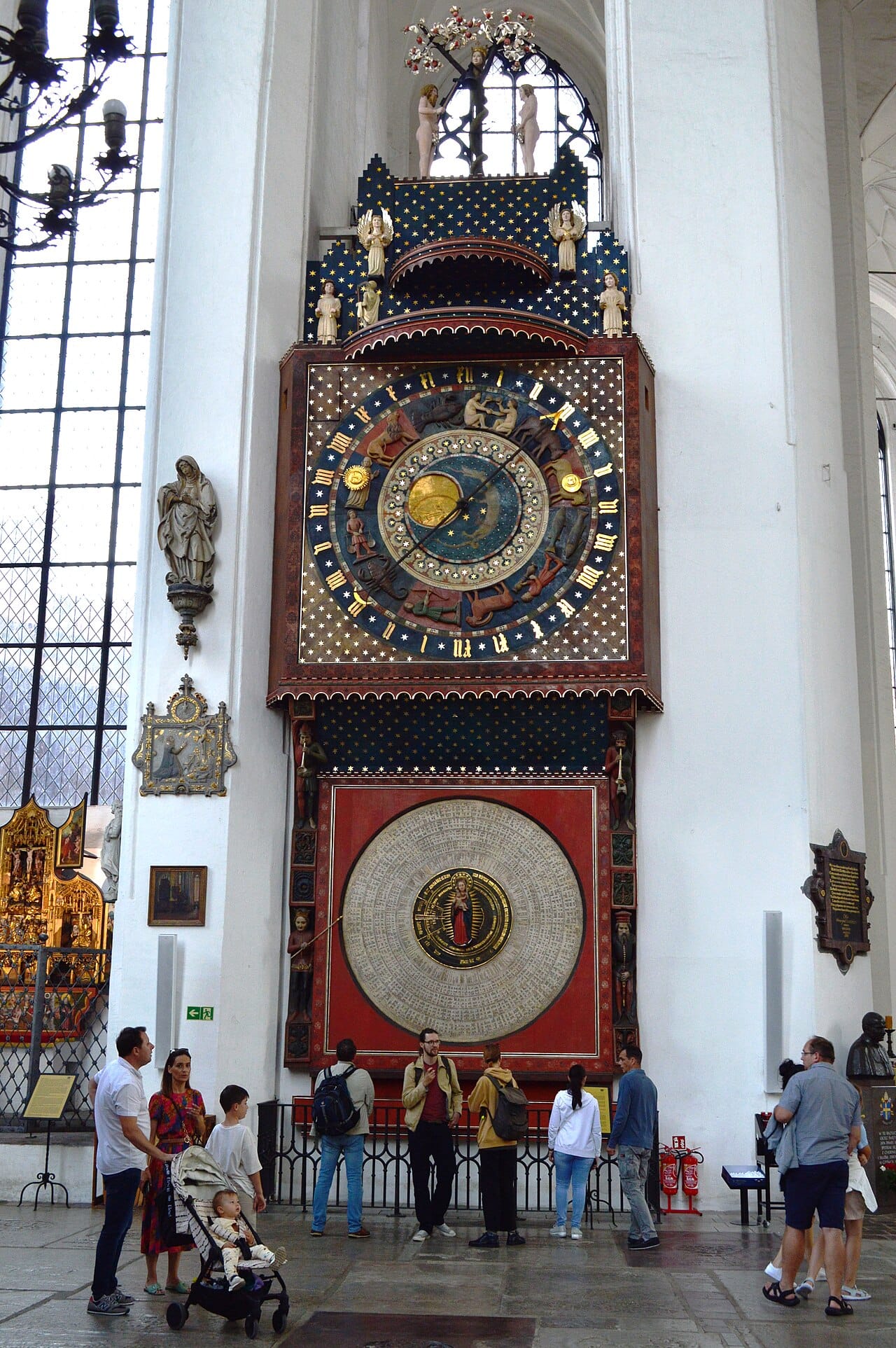
However the work which really caught my eye was the Pieta unassumingly hanging in the northern side on the church. This painting is simply a masterpiece of late gothic art, and is wildly under-appreciated.
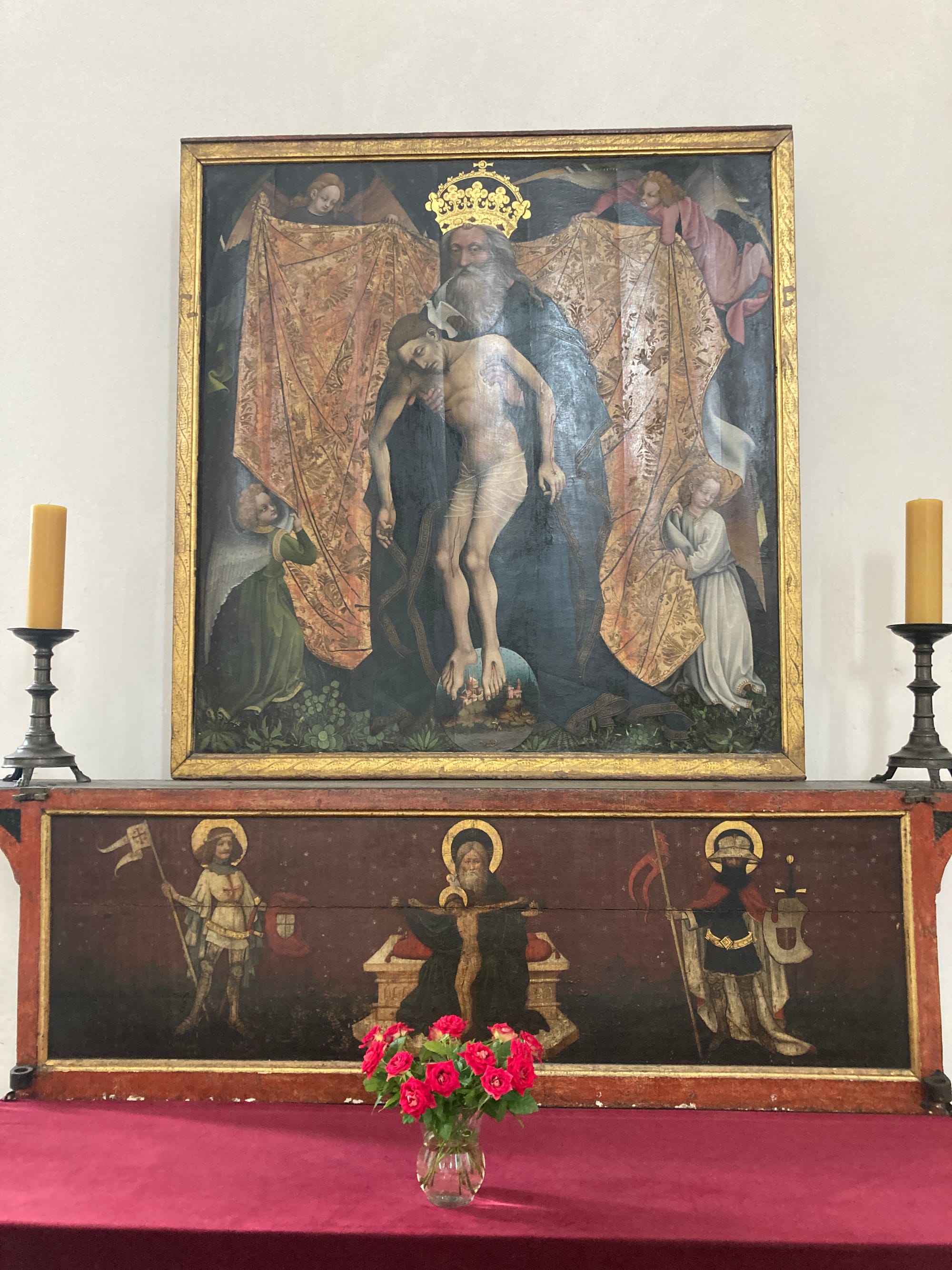

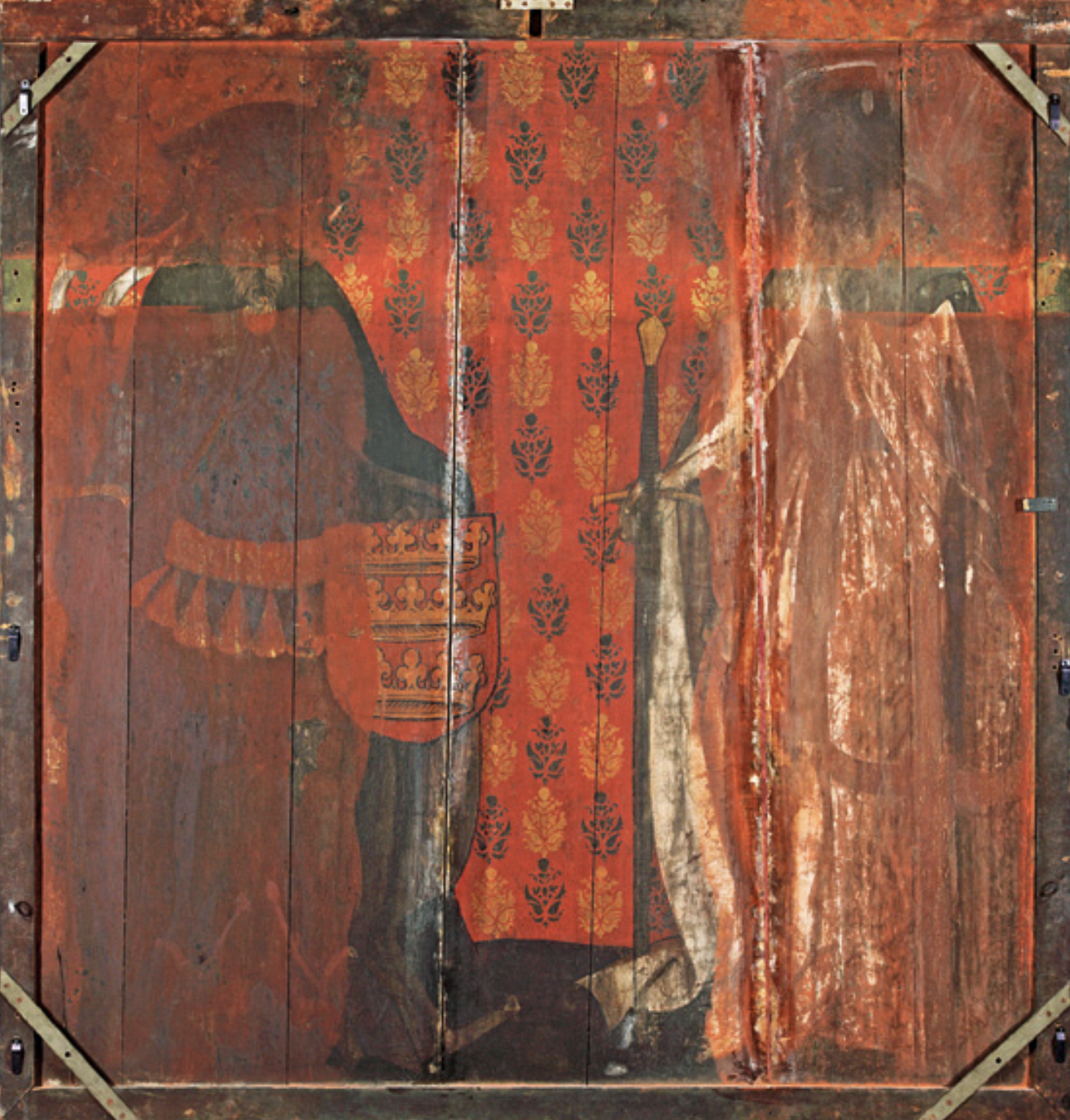
There is a 3d model available here with less brightness but larger resolution. Below are zoomed in images from the model.
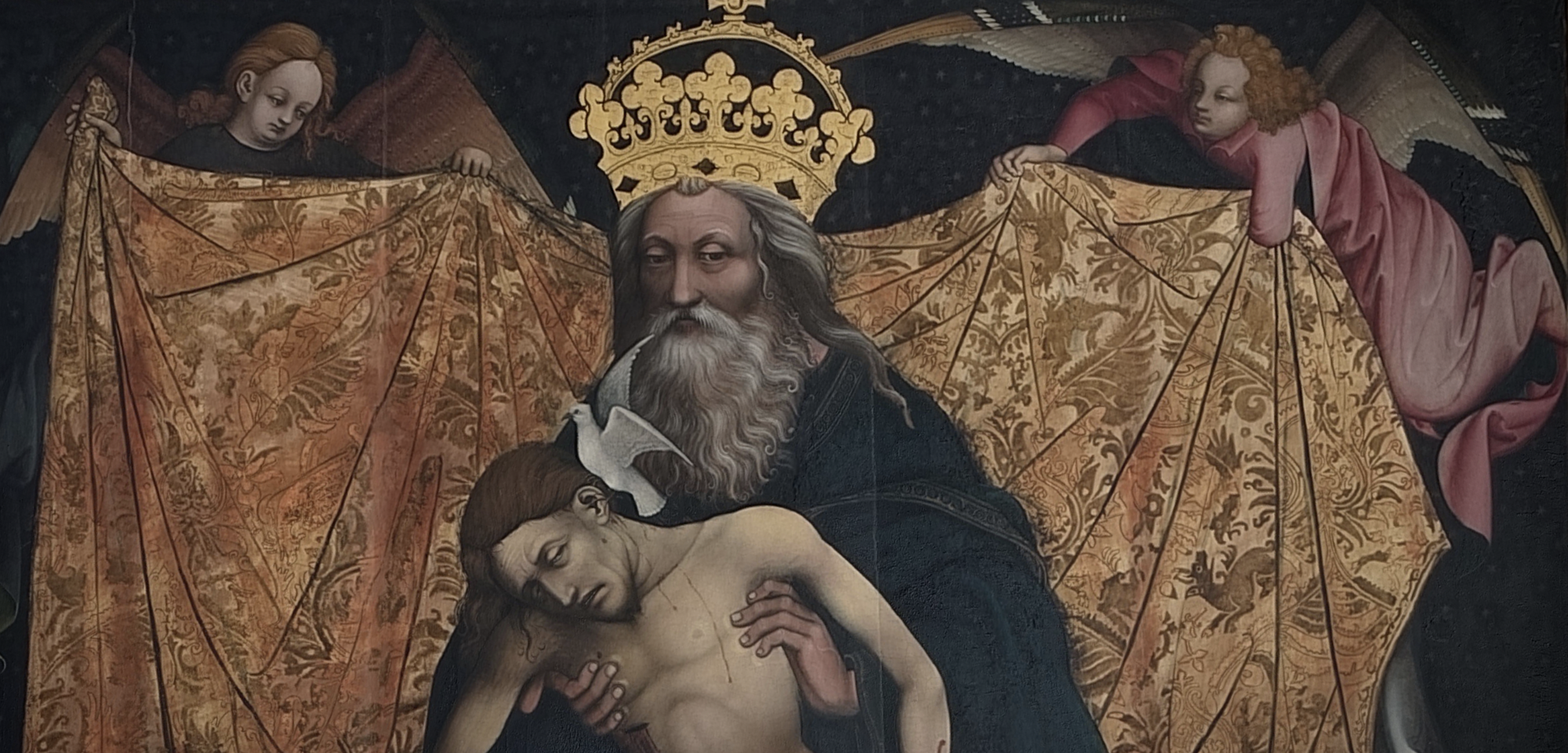
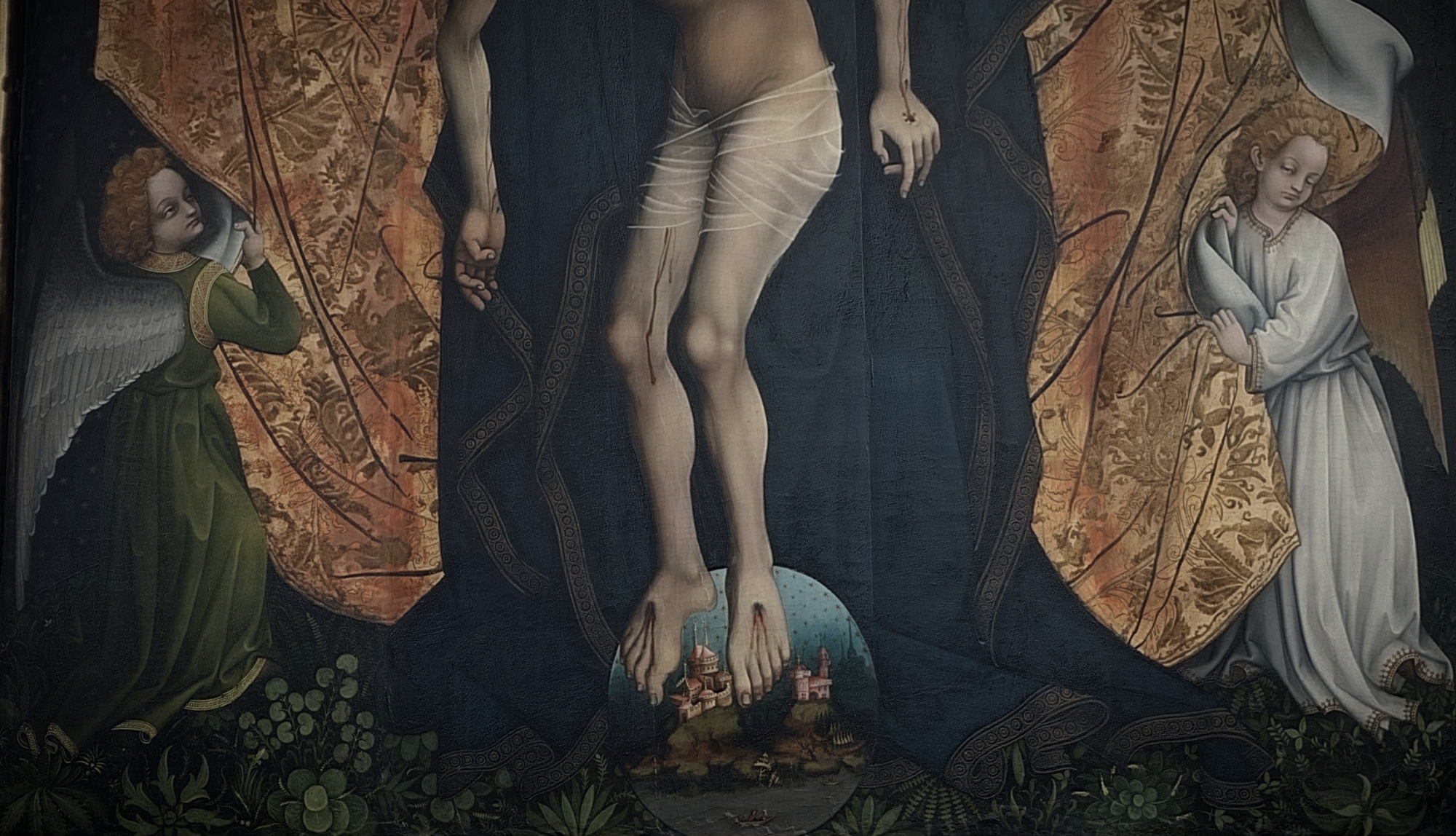
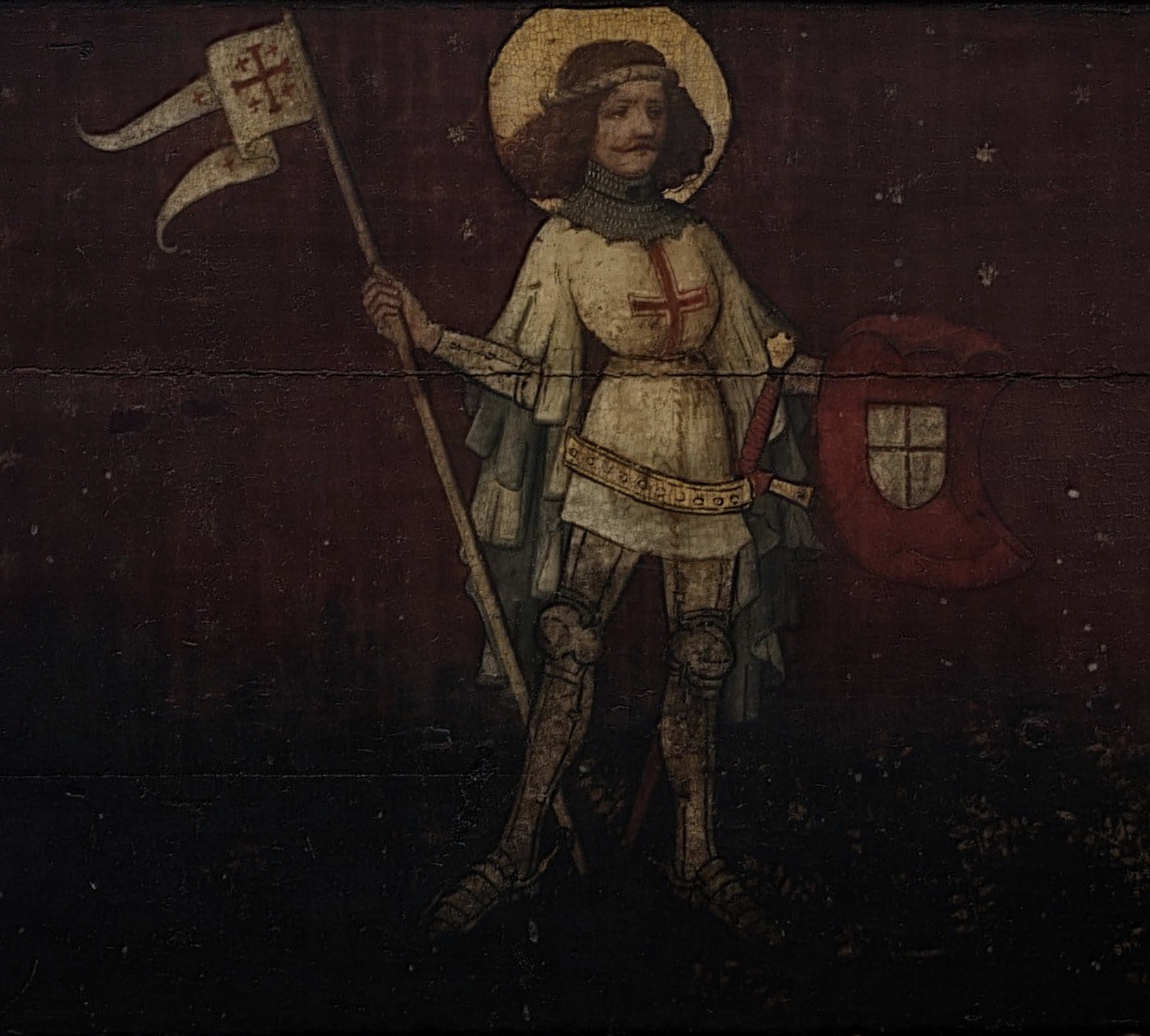
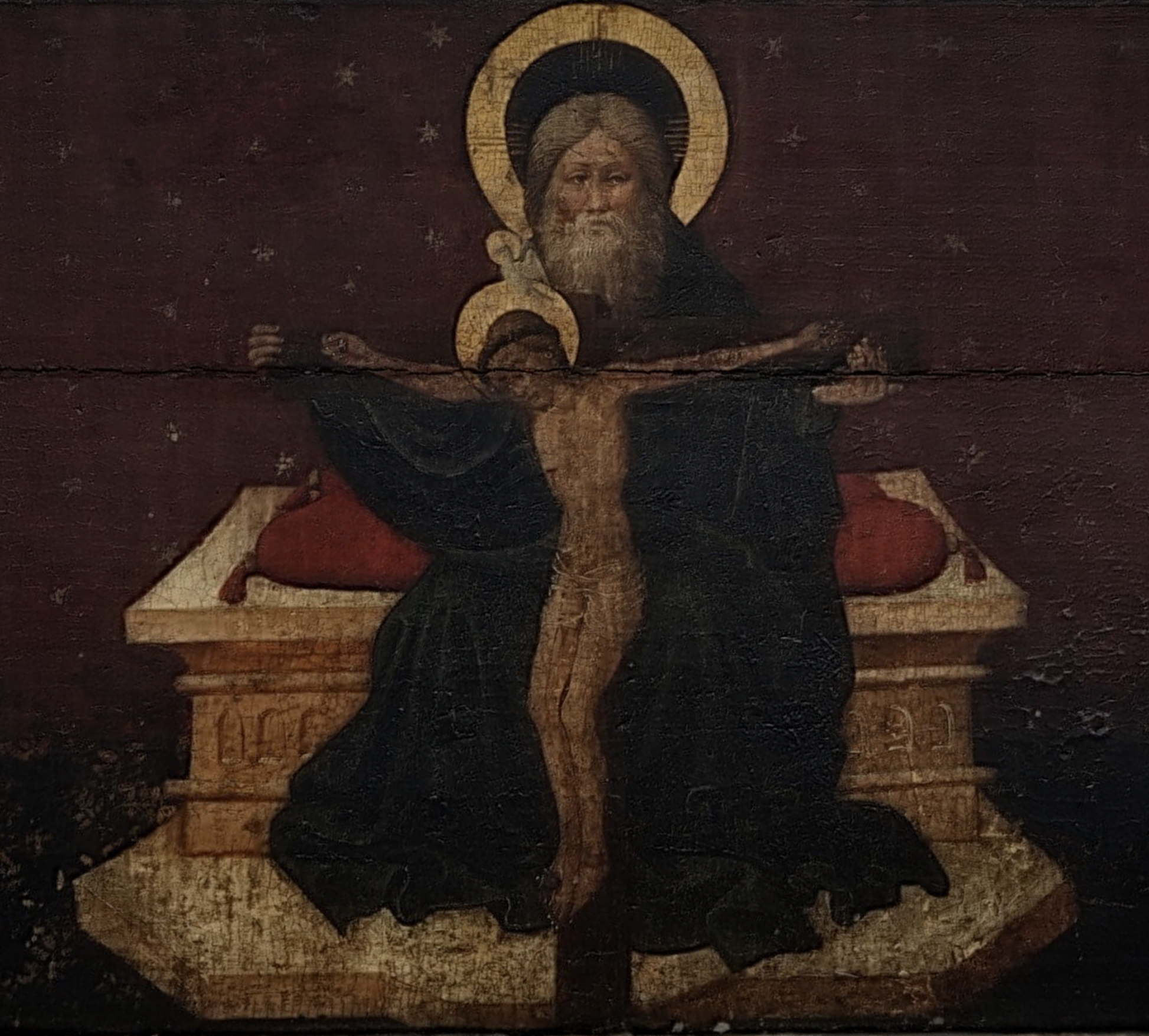
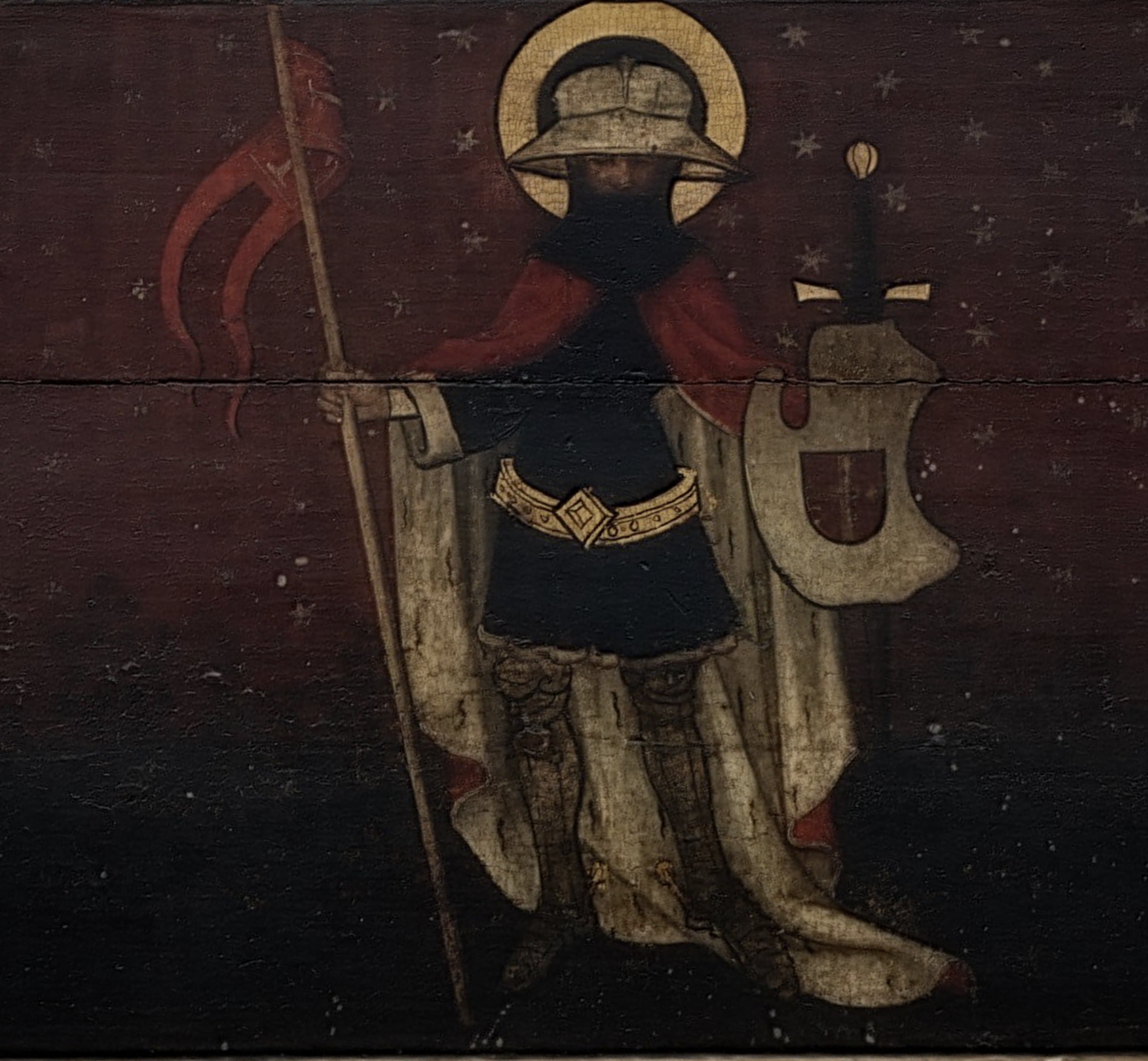
Predella (3d scan)
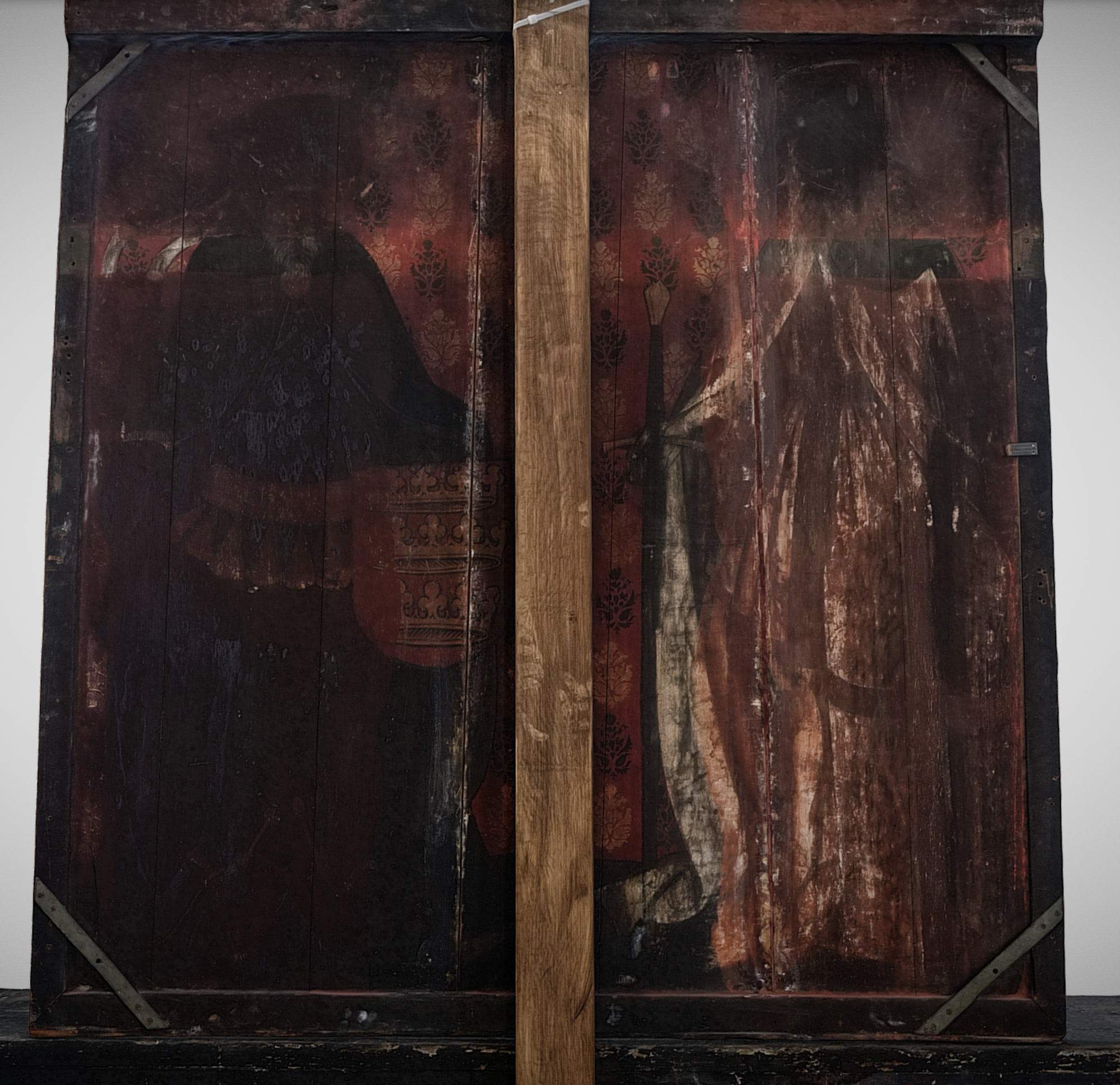
The altarpiece was unpublished until 1999. It historically belonged to the St. Mary's church, the main theory being that it was donated by the Brotherhood of St. George for the brotherhood's chapel in the basilica. Alternatively, as suggested by Stephan Kemperdick, the altarpiece may have initially been destined for a chapel or church in a Teutonic Order castle. It was confiscated by the Nazis in the 1940s and brought to Berlin, where it remained in after the war. It was restituted only 5 years ago in 2020 to Gdańsk.
The main panel depicts the Pieta Domini, or the Holy Trinity Pieta with angels. There is a predella with depictions of Holy Trinity in the Throne of Grace version, St. George, the brotherhood's patron saint, and St. Olaf. On the verso is a painting, in poor condition, of King Arthur and a Grand Master of the Teutonic Order. in 1454 the Teutonic order was driven out of the region, and likely after that is when the verso suffered mutilation. The panel and predella most likely were accompanied by (now lost) painted triptych wings.
State of Preservation
An important matter when dealing with a painting this old is the state of preservation, specifically how much of the painted surface is original versus overpainted. There was one documented restoration, by Helen Smith in 2002 in Berlin. The painting had open joints, there were losses in the paint layer and primer along the lower edge as well as flaking paint layer. The varnish was heavily darkened and cloudy. The joints were closed, the colour layer consolidated, old fillings and retouching removed, the varnish removed and a new coating applied after retouching the missing areas.
Pre-Eyckian influence
The attribution to a particular school of painting is still widely debated among scholars. What is certain is that the altarpiece is one of the greatest surviving works of Pre-Eyckian art. As Stephan Kemperdick notes, it is more modern than the works of Jan Maelwael and his successor Henri Bellechose, but less modern than Campin and Eyck. Maelwael and Bellechose were among the most advanced and talented pre-Eyckian painters, so this highlights the significance of this painting in understanding the transition from from Pre-Eyckian painting to the Early Netherlandish painting pioneered by Van Eyck and Campin.
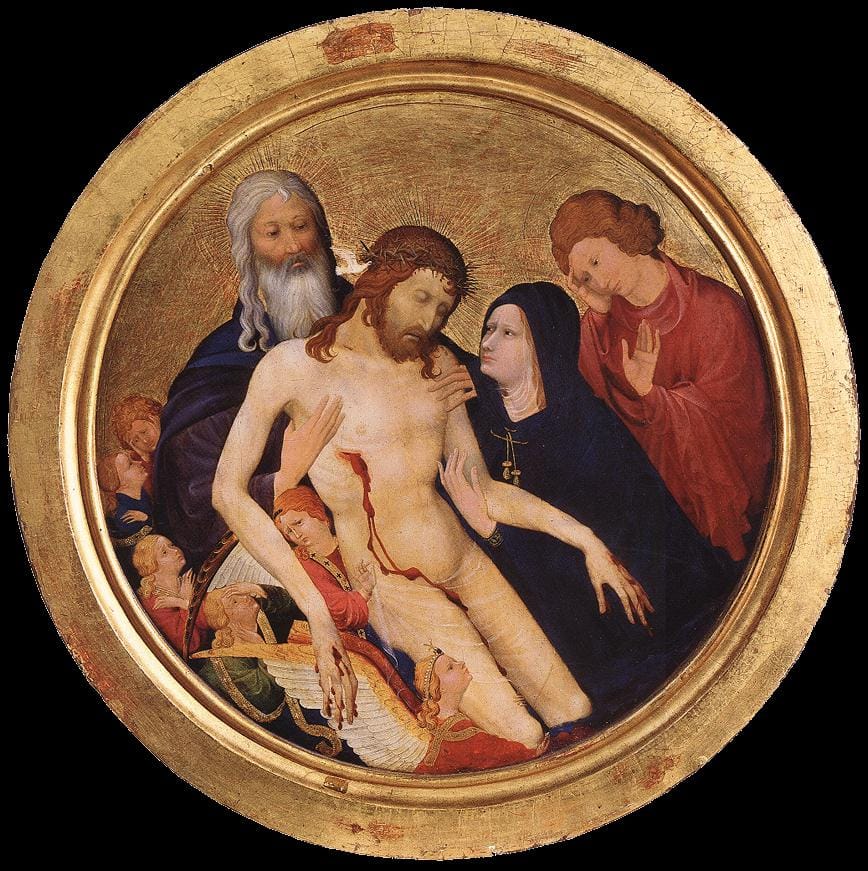
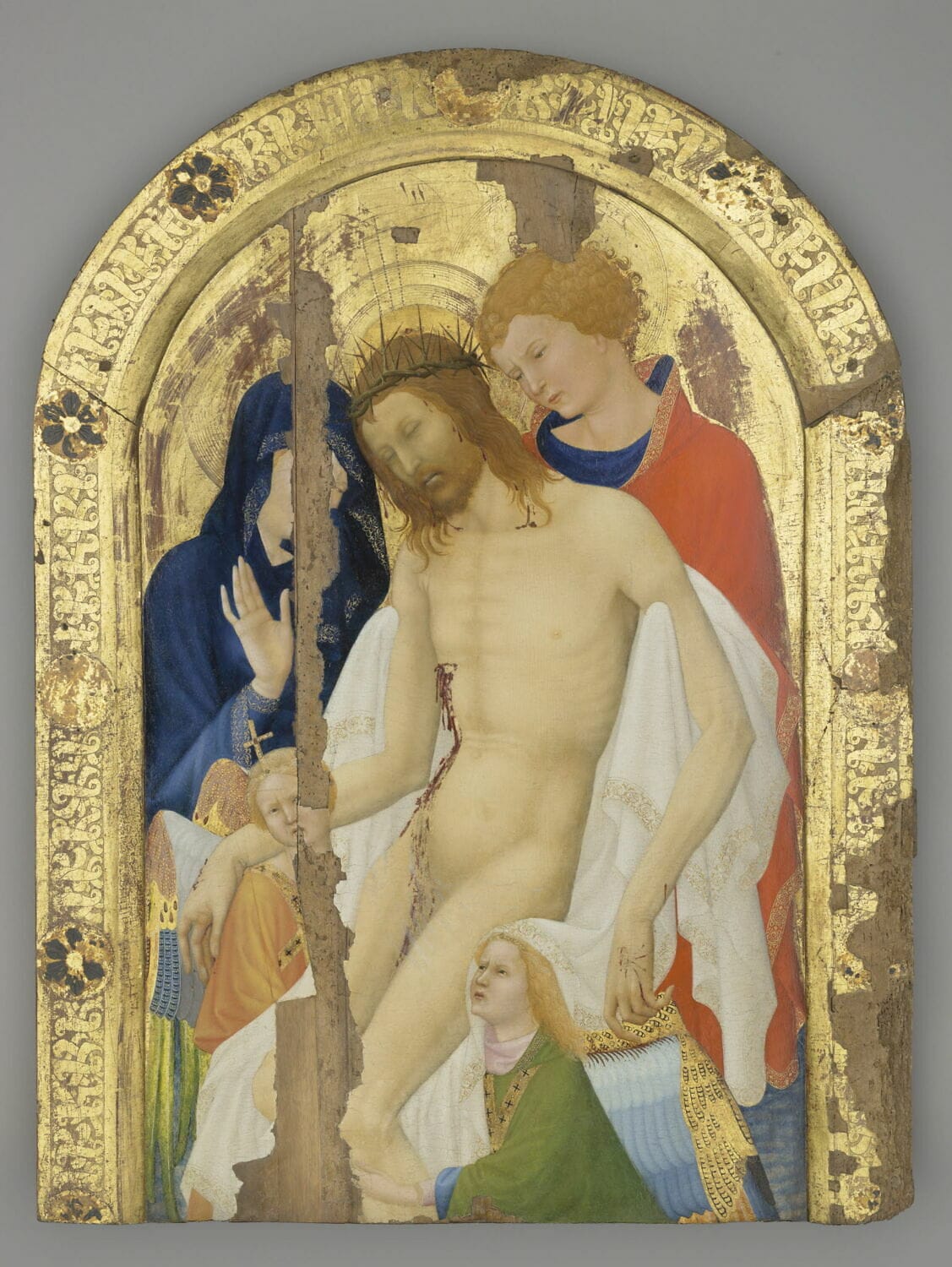

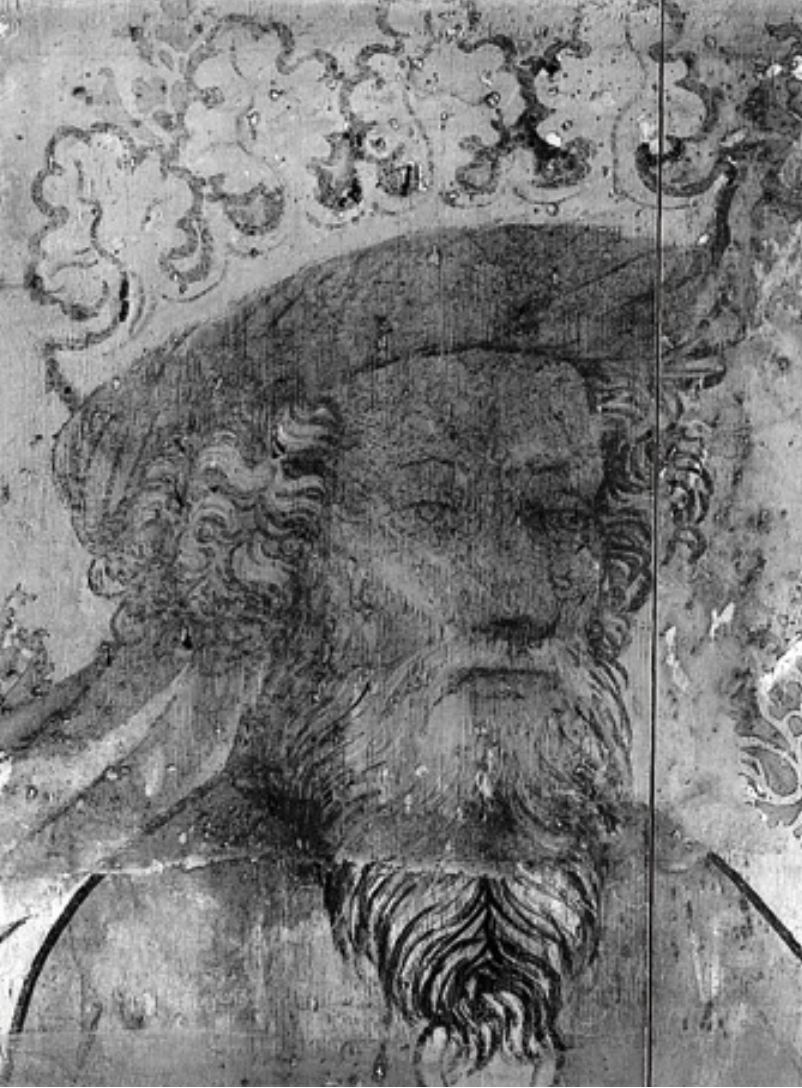
Emperor and Elector Drawing, Herman Maelwael, in the Gelre Armorial, Royal Library of Belgium, Brussels. Infrared IRR, Pieta Domini Verso, detail of King Arthur.
Considering the close connection to the Maelwaels and Limbourgs specifically, one has to wonder if not only there is a connection to the low countries, but specifically a connection to Guelders.
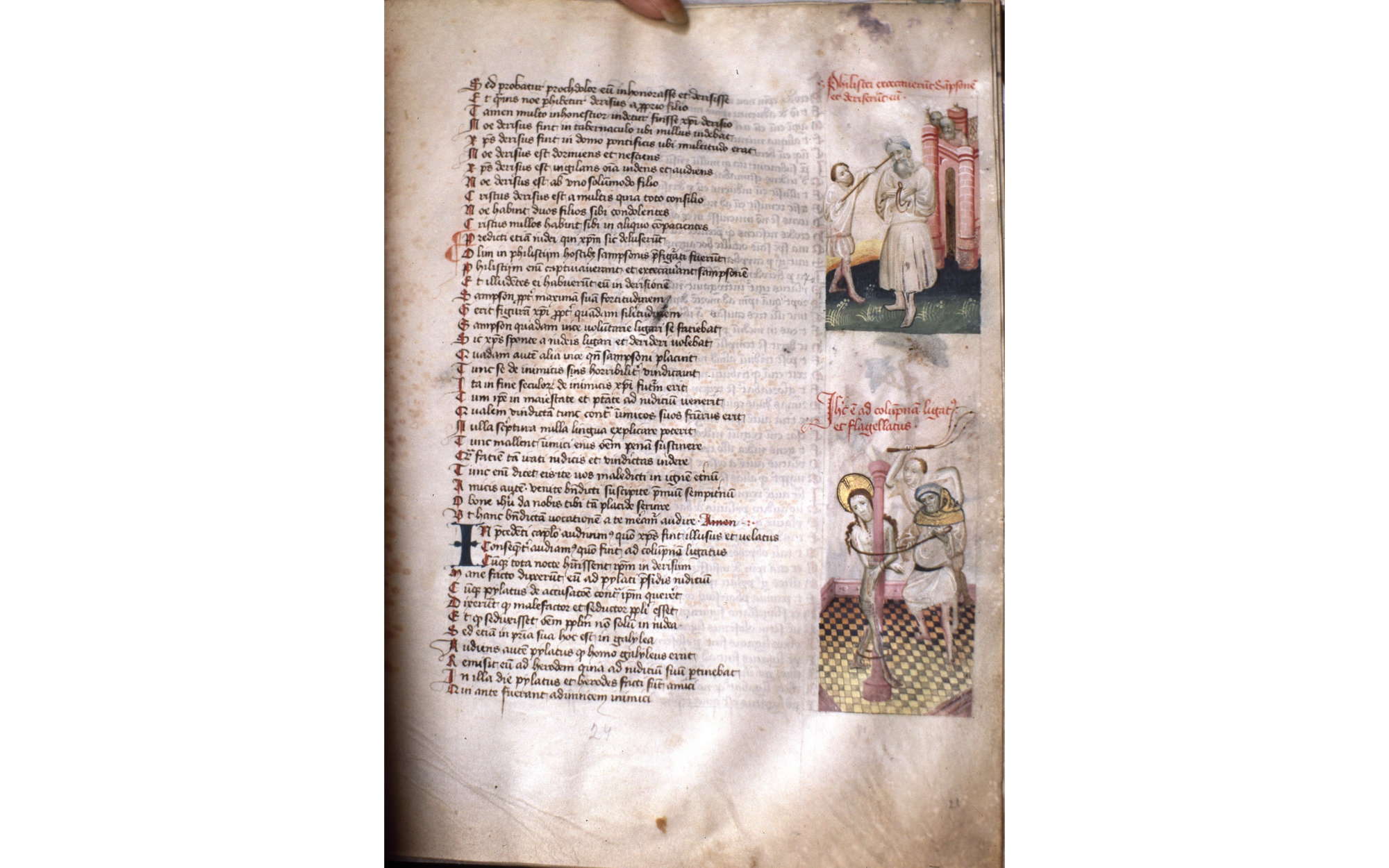
There are also some vague similarities to the illuminators the Master of Mary of Guelders and Master of the Brno Speculum who probably trained under the former in Guelders.


Psalter of Jean de Berry, André Beauneveu, Paris BNF MS.fr.13091. Detail of Predella, Pieta Domini, St. Marys Church
It's also worth mentioning there is supposedly a connection to a lost burgundian pieta composition possibly by Sculptor and Painter André Beauneveu. The archaic gothic throne with an extending base on the central image in the predella has some similarities to manuscript illumination patterns of the period.
Attribution
There are several theories of origin for the Pieta Domini:
- a Netherlandish consignment sent to the east,
- a work by a Netherlandish artist active in Danzig,
- a local artist who had trained in the low countries,
- a Bohemian artist (i.e. Prague school for example),
- a local German-school artist (i.e. "Master Francke")
In my view the painting is most likely by either a Pre-Eyckian Netherlandish artist active in Central Europe or a Central European artist trained in the Low Countries. In other words, I don't think the artwork is entirely Netherlandish (i.e. commissioned and shipped from Bruges) or entirely Central European (made in Danzig or Prague by an isolated local workshop).
An alternative theory is a German or Bohemian artist, which is also possible. For an under understanding of the Bohemian school, I highly recommend visiting the Saint Agnes convent in Prague, which is the greatest collection of medieval Bohemian artworks and well worth visiting (think a Bohemian Cloisters or Cluny). I spent many hours there last year. Personally, I don't believe there are works of sufficient quality and detail in the Bohemian school to justify an attribution there to the St. Mary's altarpiece, although I do believe that the shoemaker guild painting is likely influenced by this school.

The impact of Netherlandish art on the St. Mary's altarpiece is most visible when comparing the painting with the copy in the Warsaw museum, which in my view is by an artist from the Bohemian school. This painting originated in the shoemakers guild, and was a much later copy after the original. In my view the quality of the copy is far inferior and the technique is completely different.
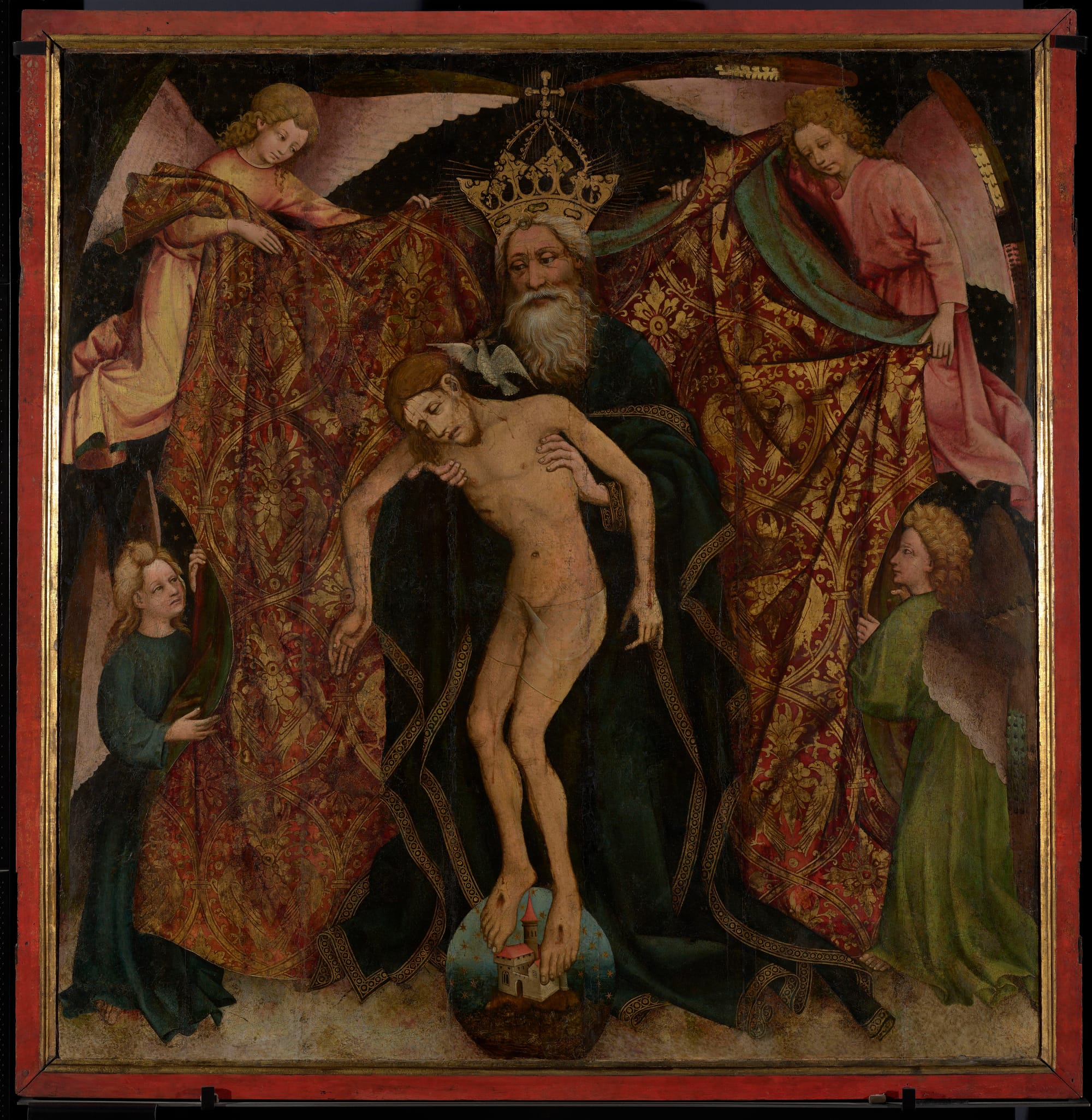
The Pieta Domini in Warsaw also featured now-lost triptych wings, pictured blow. The wings feature large angels bearing Arma Christi.
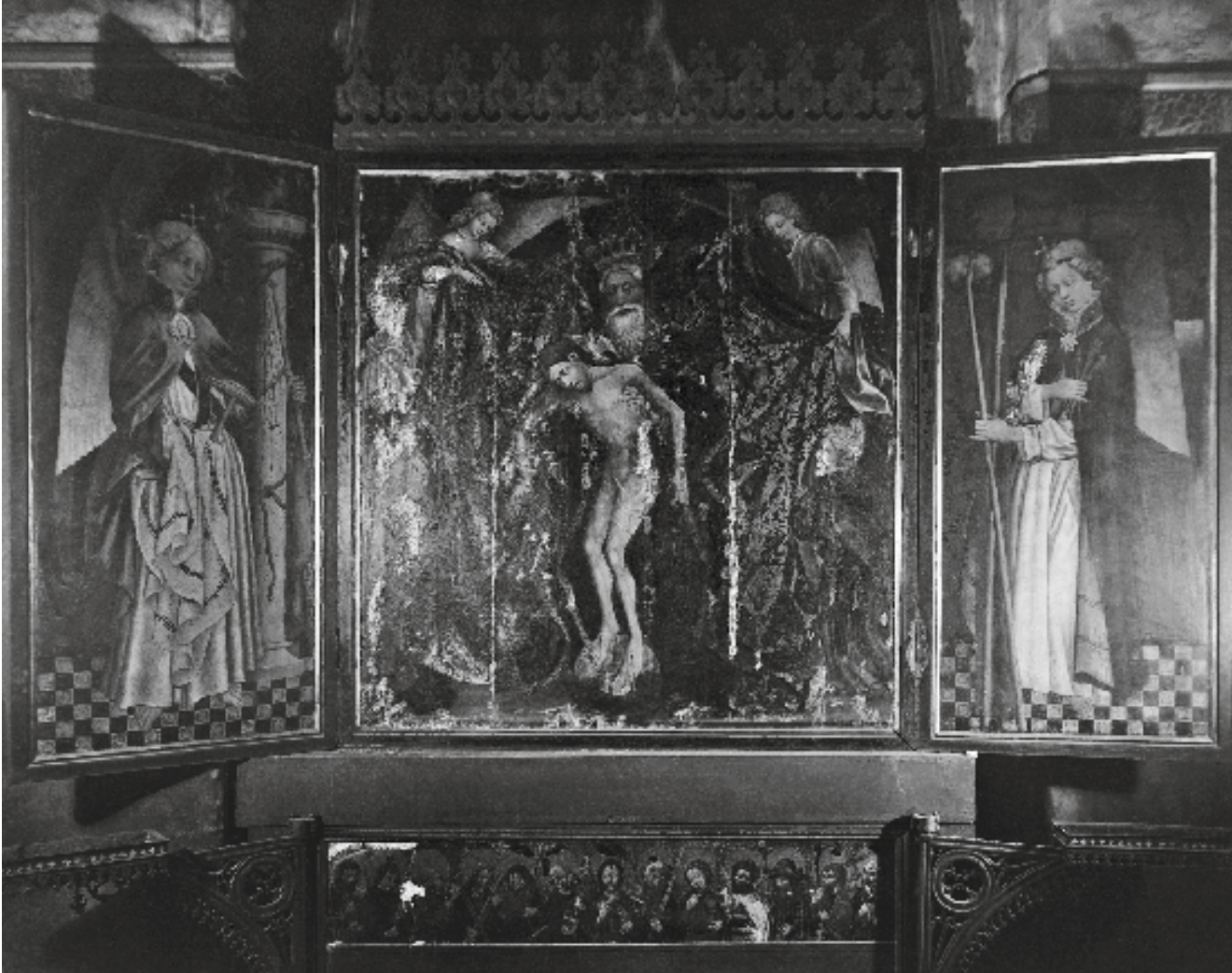
One candidate artist to whom the St. Mary's altarpiece was historically attributed is Master Francke, a german artist who was born in the Rhine or Netherlands and likely trained in France or the Low Countries. Master Francke is an artist who transmitted pre-eyckian art to Central Europe, and so he remains the closest fit to the St. Mary's Pieta Domini. There is also always the possibility that the artist was a colleague or even teacher of Master Francke. At the very least, it is highly probably that there is some relation between these artists.
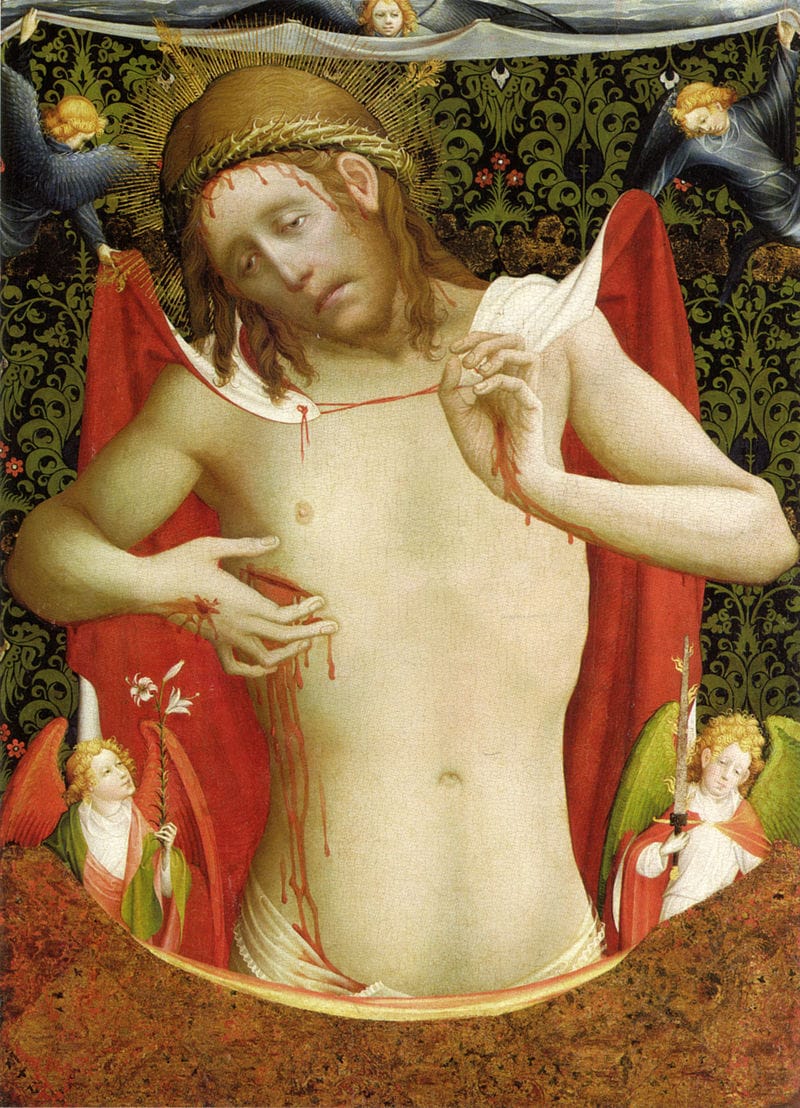
There are several artists from the Bohemian school that have elements in common. The Master of the Třeboň Altarpiece is very similar to Master Francke. Other related names include the Master of the Imhoff Altar, Master of the Jeren Epitatph and the Master of the Bamberg Altar.
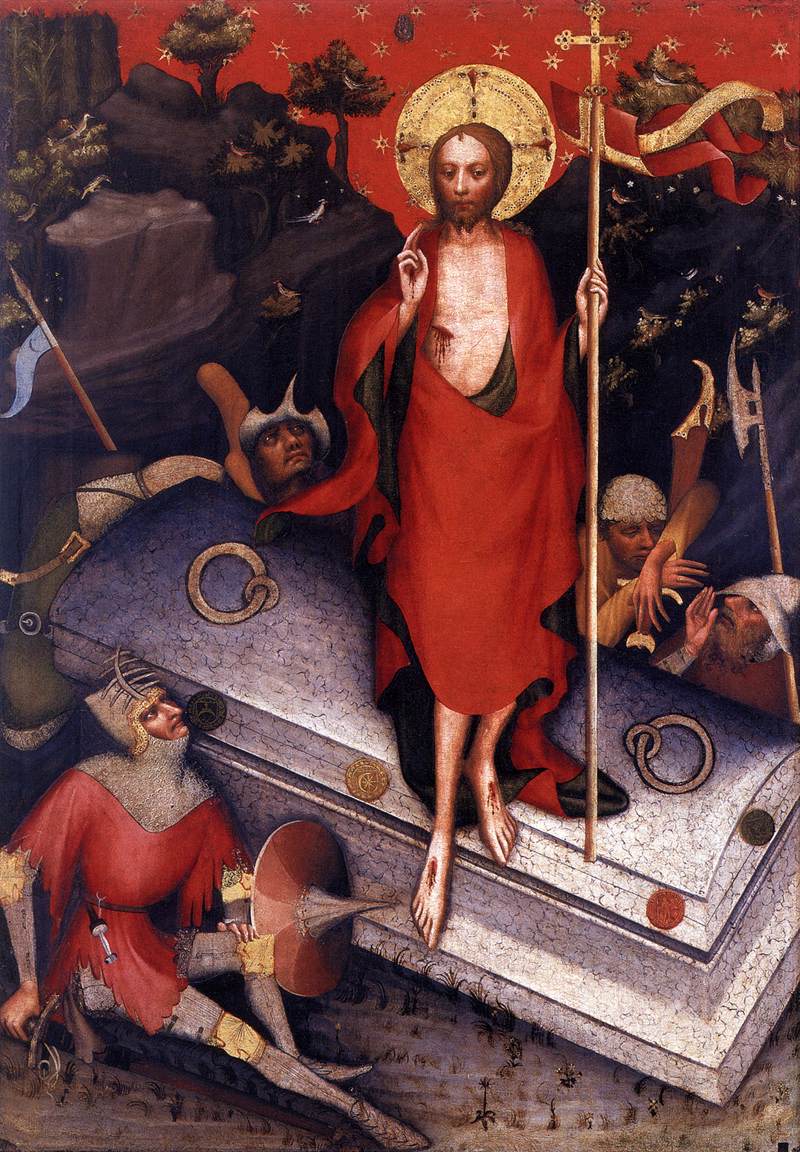
Master Theodoric is an earlier German painter, active in Bohemia circa 1360-1380, but there are enough similarities that it seems to me the artist could have been at least indirectly influenced by him.
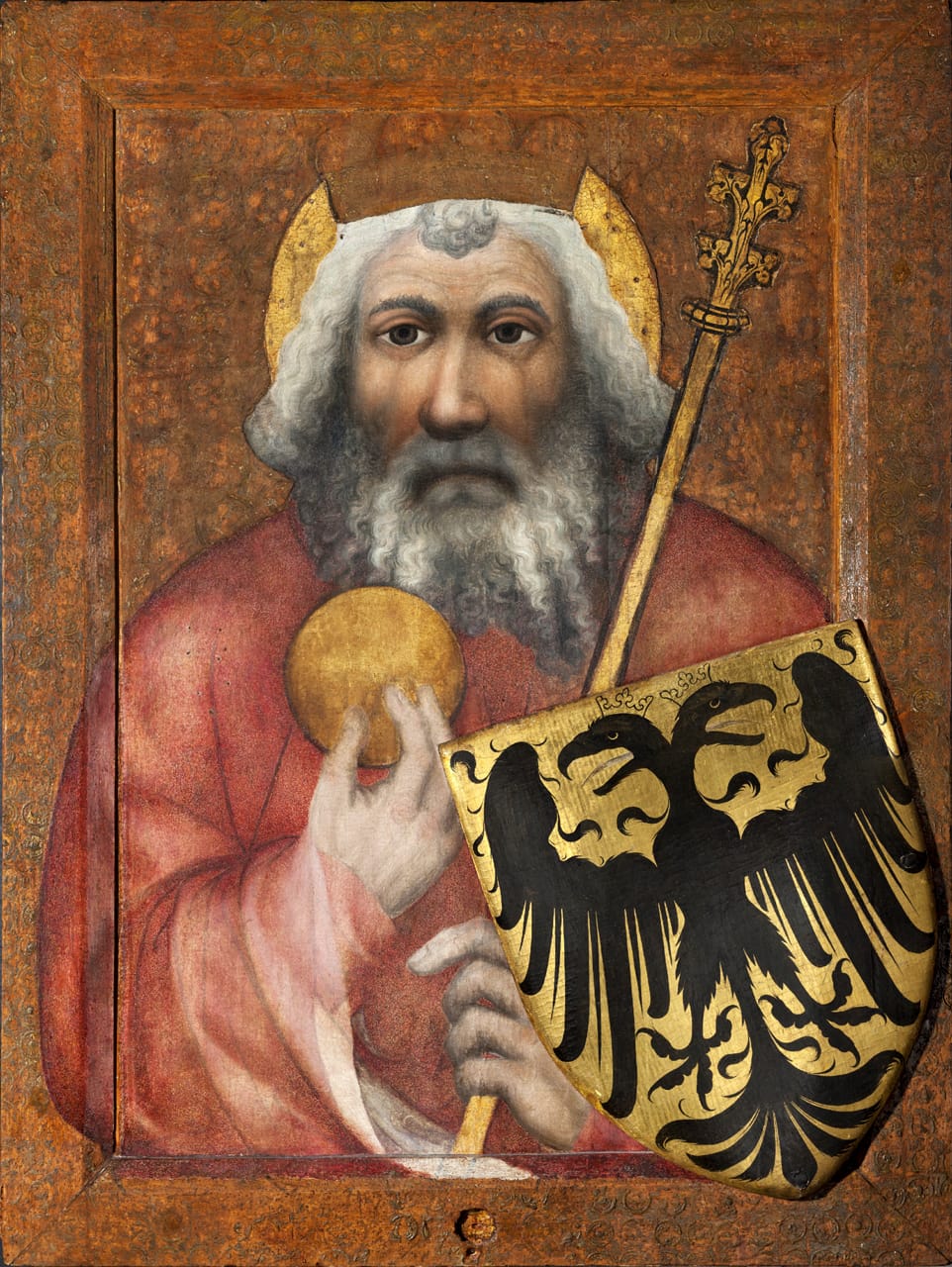
While the Bohemian artists bear similarities to the work, they don't seem to be top candidates for attribution of the St. Mary's Pieta Domini, as the work seems to be of a more refined and different type.
To understand the context of the artistic exchange, we need to understand that there was already significant cultural and economic exchange between Danzig and the Baltics and the Low Countries. Guillebert de Lannoy, chamberlain to Philip the Good, visited Danzig and The Baltics for diplomatic trips in the first quarter of the 15th century. Hanseatic merchants operated a guildhall in Bruges, engaged in commerce of beeswax, cloth, grain and other goods including baltic oak used as support for Early Netherlandish paintings. Linguistic compatibility between Middle-Low-German and Middle-Dutch allowed them to communicate without interpreters. There is a documented sculptor named Jan van der Matten from Bruges who worked in Prussia between 1397-1406. And we know that Master Francke was transmitting painting developments from Western to Eastern Europe. So it's highly likely there were other artists journeying for training or economic opportunities back and forth.
Whatever the true story of this masterpiece, Gdańsk is a beautiful and pleasant town certainly worth visiting, reminiscent of Bruges and filled with artistic treasures.
More Resources:
- Stephan Kemperdick, Two Trinity Panels from St Mary’s Church in Gdańsk, 2018
- Adam S. Labuda, O retabulum Trójcy Swigtej bractwa sw. Jerzego w kosciele Mariackim w Gdansku, 2012
